Can Lipo Battery Cells Be Shipped by Air?
With the widespread use of electronic products, batteries nowadays have become a household item that we can see everywhere. The most commonly encountered type of battery is the lithium-ion battery. However, many people have no idea that lithium batteries are classified as Class 9 hazardous materials. Air transport is the most concerning and frequently updated transport regulations among the shipping methods such as sea, land and air transport. Read on to find out if your battery is suitable for air transportation.
What is a lipo battery cell?
Lipo Battery, full name lithium polymer battery, also known as Li-po battery, or more accurately lithium ion polymer battery (abbreviated as LiPo, LIP, Li-poly, etc). It is one of the lithium-ion batteries and sometimes called lithium battery. Please note that lithium-ion batteries' UN number in transit is UN3480 / UN3481.
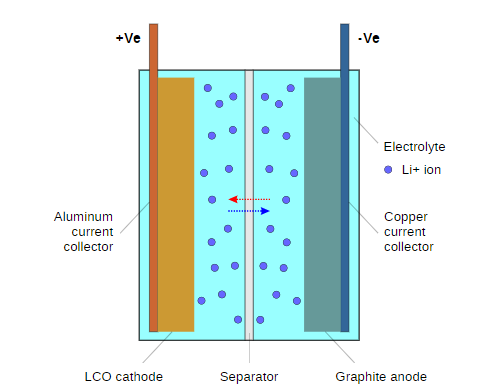
Lithium Ion cell structure
Cell means a single encased electrochemical unit (one positive and one negative electrode) that exhibits a voltage difference between its two terminals. The battery cell is the core of what makes up a battery whose name is dependent on its cell's nature. The core is the basis for the name of the battery in terms of chemical properties, so a lithium polymer cell refers to: a single electrochemical unit that uses a highly conductive semi-solid lithium polymer as the electrolyte to replace the traditional liquid lithium ion electrolyte.
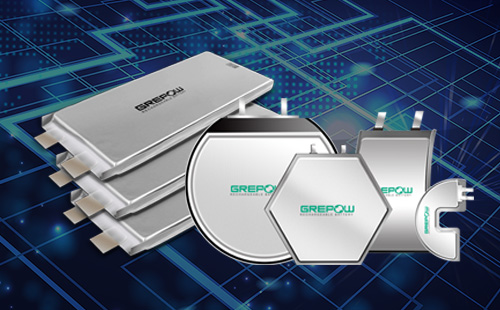
Grepow lipo battery cells
Lipo is one of the lithium ion, maybe you will hear about lithium metal batteries. Although we are talking about lithium polymer battery air transport in this article, knowing more will help you make more accurate decisions. Here is a brief summary for you.
The difference between lithium-ion and lithium metal batteries
While there are similarities between these two types of lithium batteries, their differences are worth noting. Lithium metal batteries contain lithium metal and are primarily non-rechargeable. They have lithium metal or lithium compound as the anode.Lithium-ion batteries are rechargeable, and lithium is present in the electrolyte only in ionic form. Lithium ion batteries include lithium polymer batteries. As the most commonly used is rechargeable lithium batteries, lithium-ion batteries are sometimes referred to as lithium batteries.
Can lipo battery cells be shipped by air?
Yes, both lipo cells and lithium batteries can be shipped by air. But there are three important points to note.
Provide the battery manufacturer's certificate
Generally, customers need the battery manufacturer's certificate such as a UN38.3 report, identification, MSDS and drop test report. As of January 21, 2022, lithium batteries and battery manufacturers must provide test summary documents upon request. The test summary includes a standardized set of elements that provide traceability and accountability to ensure that lithium batteries and battery packs supplied for transport are designed to meet the testing requirements of UN 38.3.UN 38.3 refers to Part 3, paragraph 38. 3 of the United Nations Manual of Tests and Criteria for the Transport of Dangerous Goods, Part III, paragraph 38.3, which was developed by the United Nations specifically for the transport of dangerous goods.
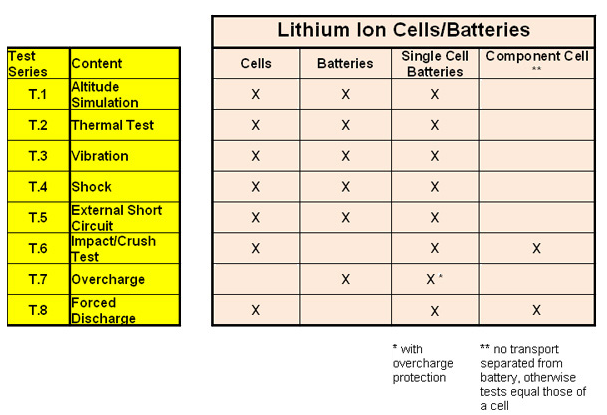
Test Requirements according to the UN Manual of Tests and Criteria Part III, Subsection 38.3
MSDS:A Material Safety Data Sheet (MSDS) is a document that contains information on the potential hazards (health, fire, reactivity and environmental) and How to work safely with the chemical product. Attention, when choosing a battery manufacturer, only cells and batteries manufactured under a quality management program may be offered for transport.
Provide the battery trademark
Class 9 trademark is one of the 45 categories used by the United States Patent and Trademark Office (USPTO) for the classification of products or services. Battery cells and Batteries belong to Class 9 trademarks, and the corresponding product trademarks should be prepared in advance when exporting.
Offer the original seal stamped by the battery manufacturer
If you’re not the battery manufacturer, note that to get the right original seal in advance. A copy is invalid.
How to ship lipo battery cells?
Lipo battery cells can be shipped by air when all corresponding regulatory requirements are met which include ensuring that:
The cells passed the applicable UN tests
Lithium batteries are required to, prior to transport Must pass the eight test requirements of high simulation, high and low-temperature cycle, vibration test, shock test, 55 ℃ external short circuits, impact test, overcharge test, forced discharge test, in order to ensure the safety of lithium battery transportation.
All terminals are short-circuit protected
Cell short circuits caused by contact between the cell terminals and other cells, metal objects or conductive surfaces is one of the main risks of shipping batteries. Protect the terminals by covering them with insulating, non-conductive materials and packing each battery cell in a fully enclosed internal package.
Meet packaging restrictions
Battery cells must be packed individually for express delivery, with a maximum of 2 in the inner box and no more than 10kg in a single piece; the inner box should be sealed, and the inner/outer box should not make a sound when shaken to fix the battery to prevent it from moving within the package. The packaging should be in such a way as to prevent the battery from being accidentally started in transit. The packaging of the battery cell should have the battery type, model, voltage and capacity, and the power should not exceed 100WH. Calculation method of power: capacity AH * voltage V
Use proper internal and external packaging
The outer box packaging must be hard and clean, no soft packaging such as parcel bags and document seals, no cutting off the ears of the carton, all must be labeled with 9 types of dangerous goods and marked with UN number. The outer packaging should be able to waterproof, or by using the inner liner (such as plastic bags) to achieve waterproof purposes (unless the construction characteristics of the device itself already has waterproof characteristics).
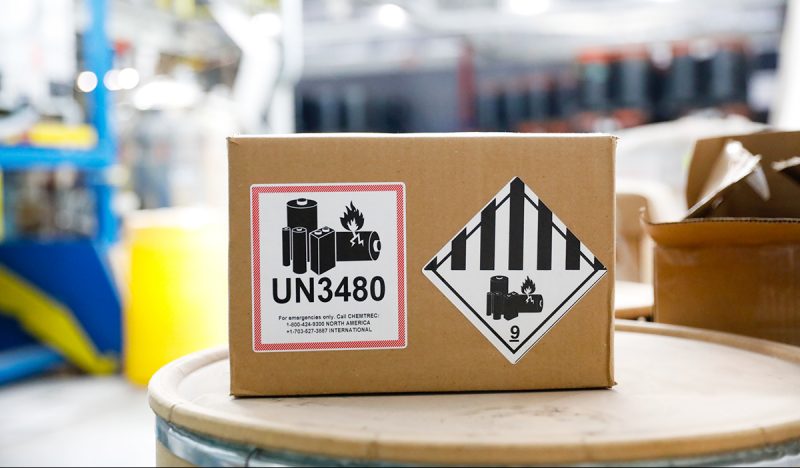
Lipo battery cells packaged with label UN3480
Once packaged, the cell must be wrapped in a sturdy outer package unless included in the device and the battery is provided with equal protection by the device containing it. Sample packaging that meets these requirements is described below.
Packaging with required markings and labels
All lithium ion cells and batteries shipped by themselves (UN 3480) are forbidden for transport as cargo on passenger aircraft. All packages are prepared in accordance with Packing Instruction 965 (PI965). Section IA, IB and II, must bear a Cargo Aircraft Only label, in addition to other required marks and/or labels. Proper marking and labeling is required for the air shipment of lithium batteries.
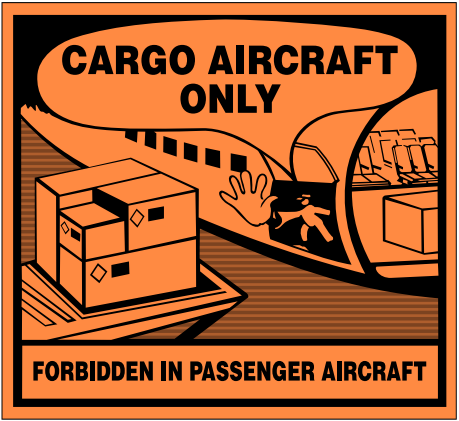
Cargo Aircraft Only label and Class 9 Hazardous Material Label
Marking and labeling packages containing hazardous materials informs everyone involved in the shipment of the contents of the package and how to properly handle the package during transport, where to place the package during transport, and what to do in the event of a problem. All markings must be securely printed or affixed to the package with the box; have clear and easy-to-read graphics; be displayed on a contrasting background; be in English as the language, with other languages available if needed; and be the appropriate size.Lithium-ion UN Numbers
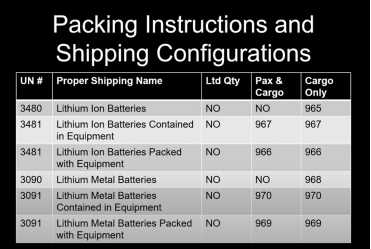
UN numbers of different Lithium Batteries
Lithium-ion batteries will use a label with one of the following UN numbers. UN3480/UN3481 If you are shipping lithium-ion batteries separately including Lipo battery cells, use a battery label with UN3480. Separate means the package contains only the battery and nothing else. If you are shipping lithium-ion batteries included in or packaged with equipment, use a battery label with UN3481. The lipo cell and lithium battery markings (shown below) must be applied to the package in accordance with the instructions in the lithium battery shipping regulations manual.
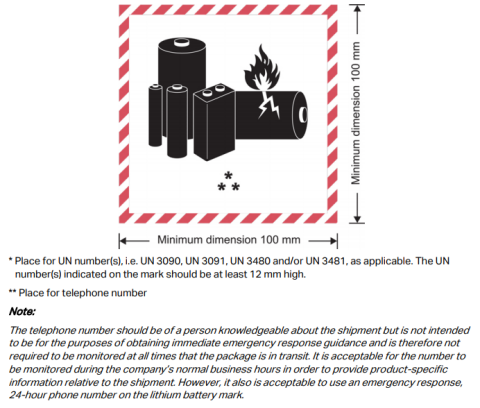
The lipo cells and lithium battery marking
The above labels need to be selected according to the specific cell type and packaging capacity.
For more information on labeling, you can click here 2022: How to Ship Lithium Batteries (by air).
Conclusion
In fact, batteries can be transported by air, but they have to meet the requirements of airlines regarding the transportation of dangerous goods. First of all, you need to clarify the type of battery you want to transport by air and whether to obtain the relevant transport safety certification; lithium polymer cells can only be loaded into the warehouse, the packaging requirements are relatively high, the number should be less than a certain standard. Also need to know in advance when the air transport of lithium-ion cells or batteries need to correspond with the type of goods marked and labeled instructions. You can provide the battery manufacturer with certificates and other proof of safe production or consult with a regular large air freight company.
Related Articles
-
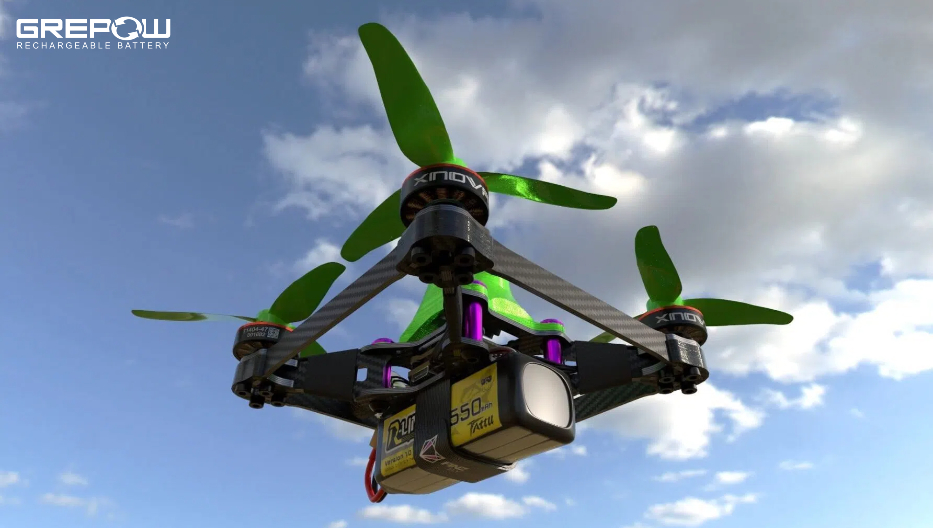
Building an FPV Drone: A Deep Dive into the Technology
2025-06-30 -
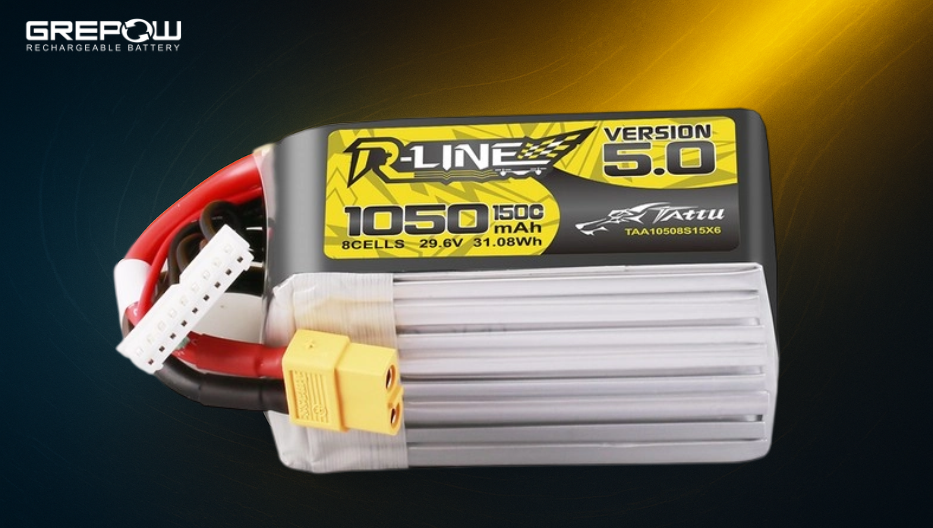
What is an 8S LiPo Battery?
2025-06-20 -
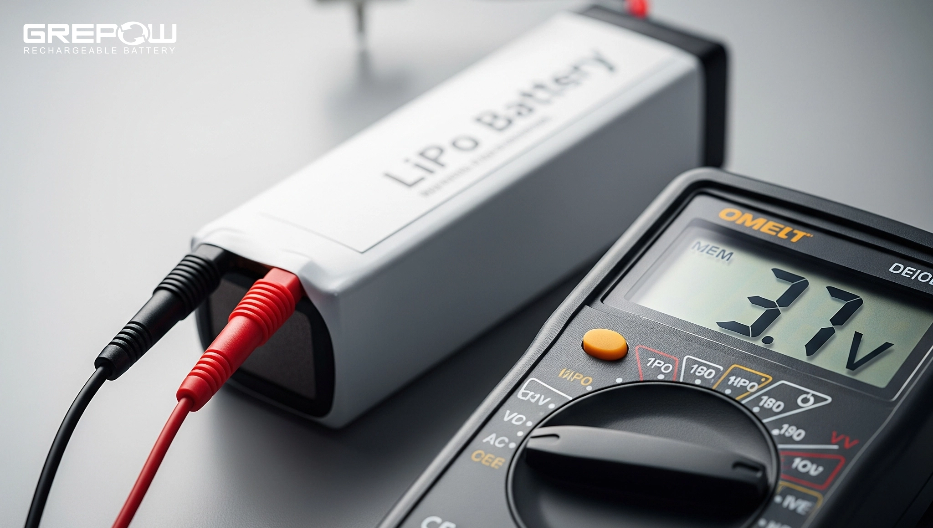
What Is the Voltage of a LiPo Battery?
2025-06-17
















































